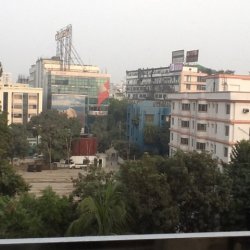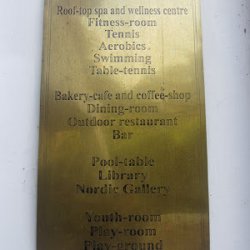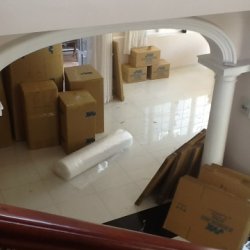Det her er Dhaka

De færreste kender til Dhaka og de fleste tror at Bangladesh er en del af Indien.
Her er en artikel som forklarer meget godt hvad Dhaka er. Iøvrigt ligger Bangladesh næsten helt omkranset af Indien og den del der ikke er, støder op til Myanmar 🙂
God læsning og god weekend.
http://www.thedailystar.net/newDesign/news-details.php?nid=247007
Sunday, August 26, 2012OP-ED
Congratulations Dhaka!
Dhaka city is in a mess. By any standards, this city is the least livable in the world. This was confirmed officially in the 2012 Econo-mist Intelligence Unit (EIU) survey of 140 cities around the globe. Dhaka scored 38.7 points. The best city is Melbourne in Australia scoring 97.5 points. In other words Dhaka today is 140th out of 140 cities surveyed. So congratulations, Dhaka!
The EIU survey to rate cities is based on 30 factors across five broad categories. They are: (1) Stability (2) Healthcare (3) Culture (4) Environment (5) Education and Infrastructure. The Survey originated when the need arose to give hardship allowance to expatriates working in any of the 140 cities. It, therefore, assesses which locations around the world have the best or worst living conditions.
So what do our city fathers have to say? Sorry, but those who are living in Dhaka cannot boast of having such a father. We have been orphaned in that respect since 2011, when our wise leaders cut up the city in two parts — north and south — and appointed two government bureaucrats as administrators, at least till the next mayoral elections. The government is reluctant to announce fresh elections, although overdue, because it knows that it suffers from an electoral disadvantage due to breakdown in delivery of municipal services.
By world standards, Dhaka is a medium-size city (only 1,464 square kilometers) but with one of the largest populations (about 16 million). It has, therefore, the densest population per square kilometer. But what specifically makes the city unlivable?
Four things perhaps make it so. First is of course its abysmal infrastructure. There are only 1,868 kilometers of paved roads which are mostly in a state of serious disrepair. None of the paved streets are of international standard. Dhaka does not have strict zoning laws. So hawkers, petty traders, multinationals and families live merrily along the same streets. There is coexistence of crass poverty, pollution and wealth in all areas of the city. The city has also very poor drainage and sewerage system.
The next aspect that makes Dhaka unlivable is its huge population. Not only are the streets crowded at all times the growth of population here is also the highest (4.2% each year) compared to any Asian city, including those in China and India. By 2025 the population of this city will be 25 million. Look at the squalor, the garbage, the graffiti that adorns the streets now. Add to it the torn and defaced political posters hung up on light posts and the ramshackle bamboo welcome gates for ministers and small leaders over busy streets. What hellish manifestation of aesthetics! Then look at the few public urinals that cater to the thousands that use them everyday and convert them into stinking hell holes. Sometimes people urinate along drains beside the streets. You have almost a Dante-like scenario that keeps visitors at bay from Dhaka.
According to some estimates the city now has 6 lakh or more registered motor vehicles and over 4 lakh pedal rickshaws. How can they move in an orderly manner through the narrow streets? The traffic police is hardly of any help. Almost 98 % of the traffic lights are out of order. Control of traffic is done mostly by hand. Add to this the recurrent blocking of arterial roads by street protest groups. The mini buses are some of the most disorderly vehicles. Their deformed bodies add to the squalour.
The third aspect which makes Dhaka the least livable city is the lack of services. In any case why should the municipal people work? Since they are poorly paid they often resort to corruption. Not only is garbage not picked up on time and allowed to rot, but also the streets are not regularly swept. Other essential service workers behave in the same way as the municipal employees. Take the case of the telephone repairman or the TV cable man, or even the electricity line repairman. All of them think that their services would only be available to those who can afford it.
With 16 million residents and over 2 million joining them everyday from the suburbs, there is chaos on the streets. Criminals find easy pickings when people are shopping, parking or even travelling from one part of the city to the other. Police are not always available to help the citizens because they are engaged on lesser issues like providing security to the VIPs or protecting political meetings or preventing hartals becoming violent.
A horrific aspect of travelling in the city during night is that most of the streets are dark. Even in posh residential areas the streets are not lighted. In fact, many people wonder who the suppliers of the street bulbs are and why the municipal technicians are unable to keep the lamps burning. The EIU survey has been generous in giving Dhaka 38.7 points. But an average resident here would give Dhaka only 10 points or less on a different slate of categories, which would assess the services that are provided to them.
What kind of politics is this that we do not hold elections to the city government? Why do we need to call up the services of unrepresentative people to run the affairs of the city? Why is the government, which is loathe to have unelected persons running a “caretaker” or “interim” national government, so adamant in running this megapolis with such non-representative persons. The purpose of any politics is to bring welfare to the people. The low ranking of Dhaka is also because we have not devolved responsibility to the right elected people.
But Dhaka has a future, just as it had a glorious past. This city is at the crossroad of traffic between South Asia and South East Asia. South West China can also avail of Dhaka’s geographical location to connect with South Asia. With such immense possibility of Dhaka developing as a regional metropolis, what this city needs is a visionary who can lead us out of the present mess and also take the city to its natural destiny. The government has a serious role to play here. It must put in place a local government that can avail the services of the best minds of the country to fix things up as well as to change this city into a modern, livable place. In Dhaka, this local government must be allowed to generate enough resources to run its affairs and also be able to coordinate the activities of all the essential services. When will the central government stop interfering in the running of this city?
Innovative methods must be found to restore the cleanliness and the lush greenery of Dhaka. In Singapore, one of the cleanest cities in the world, the president of the country personally rewards the best sweeper and the best kept public toilet with a prestigious prize each year. Why can’t we do the same? Let us restore the dignity of this great city by doing the right thing, at the right moment, at the right cost.
A wise man had once said: “There are two primary choices in life: to accept conditions as they exist, or accept the responsibility for changing them.” Which, Mr. Local Government Minister, is your cup of tea?







Ingen kommentarer endnu